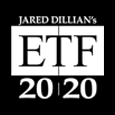| -- | June 6, 2019 Picking up Nickels in Front of a Steamroller  Income investing is hard. Let’s say you buy twenty bonds. Each of them yields 5%. Nineteen out of twenty mature at par and you get your money back, with interest. One of them defaults. You are back where you started! It is said that income investing is a negative art. Your goal isn’t to pick the winners—it’s to avoid the losers. You want to pick winners, invest in stocks. Have you seen a chart of Beyond Meat? Bonds generally don’t do that. It is also said that income investing is like picking up nickels in front of a steamroller. You’re earning a 4-5% coupon, and you could get whacked pretty much any day, just like what happened at Toys “R” Us. It is a bit like selling puts. My friend Jason Brady wrote the book on income investing. No really, he did write the book on income investing: Income Investing: An Intelligent Approach to Profiting from Bonds, Stocks and Money Markets. I have done a pretty good job summarizing it so far, but if I were you, I’d take the time to read the whole thing. As a negative art, bond investing has become more and more difficult. Yields are slender, and they are not what I would call “safe.” We are at the peak of the cycle, the default rate is virtually zero, and getting 3% on XYZ high grade corporate bond fund does not sound like a great idea. This is one reason why there has been such a historic rally in municipal bonds, pension nonsense notwithstanding. Bond investors allegedly think about what could go wrong. I am a dour/pessimistic person, so I was always a bit out of place on the ETF desk. What Could Go Wrong I am far from the first person to worry about the corporate credit cycle. Nine months ago, people were flipping their lids about the preponderance of BBB credits and the potential ginormous migration to junk. Never happened. I know a few smart hedge funds who bet against all the paranoia. They did quite well. The credit cycle will turn eventually. It will take a skilled portfolio manager to avoid the turds. I think last Friday was the first day I seriously considered the possibility that we were headed towards a recession, with two, three, and five year note yields plunging below two percent. Corporate debt issuance has been historic. Up until this point, there has been near-limitless demand for it. By the way—if you’re also starting to seriously consider the possibility that a recession is on the way, you should really sign up for a webinar being held on June 24 by my colleague, Mauldin Economics’ resident income expert Robert Ross. That blog I pointed you to last week? Robert got so many worried questions from readers that he is going to take a full hour to share exactly what he does to recession-proof his portfolio. You can save your seat for Robert’s All-Weather Income Strategy webinar right here (and I recommend that you do). If you’re an income investor, or just worried about the R-word, it will be more than worth your time. I suspect most income investors reading this are dividend investors. Dividend investing is similar to bond investing. High dividends are good, but they can also be bad, if they are signaling a future dividend cut. Anything much over a 5-6% dividend in a stock should be viewed with some suspicion. With regard to dividend investing, the key is not necessarily to buy big, fat dividends, but to buy growing dividends. Most people have it all wrong—they go yield hogging and end up paying the price. Believe it or not, Apple is one of my favorite stocks. Not because it is a growth stock, but because it is a dividend stock. It has a decent yield, but one that is likely to grow, as it will one day have to figure out how to more aggressively return cash to shareholders. The Key to Investing I am going to tell you the secret to investing. Are you ready? Invest in companies with dividend growth, and reinvest the dividends on a regular basis. That’s it. Say you had a million dollars. Buy 20 stocks with dividend growth. Set up the dividends to reinvest. Look at the P&L once a year. Make some adjustments. Repeat. It really is that simple. Of course, trading is more fun, and gives me stuff to write about. My guess is that this growth phase we’ve had in the stock market for so long is getting down to tag ends. Recent history has demonstrated that it has paid to buy stocks without dividends. I have never understood why you would buy a stock without a dividend. Making enough extra cash to give some to you is how a company demonstrates that it’s profitable. I have written before about the 35/55/3/3/4 portfolio. But I have never spent much time talking about the composition of the component parts. The 35% in equities should all be invested in stocks with growing dividends, across all sectors. The 55% in fixed income should be split between treasurys (including TIPS), corporates, mortgages, municipal bonds, and a handful of international bonds. Then you have the 3% commodities, the 3% gold, and the 4% REITs. The blended yield of this portfolio is probably around 3 to 3.5%. You could retire on that! Yield hogging is a pejorative term, and it should be. The whole financial crisis started because people decided to reach for another 30 basis points. Rule number 42: don’t be dumb. Tonight’s the Night If you’re in NYC, please come out to the party at Hotel Chantelle at 92 Ludlow Street. It gets going around 8pm. Tickets here. Proceeds go to charity. In the sage words of Jermaine Stewart, we don’t have to take our clothes off to have a good time. Besides, we’re old. 
Jared Dillian
 ETF 20/20: Your solution for intelligent ETF investing. Jared’s introductory service, helps investors use ETFs to make more money in the markets with less volatility. ETF 20/20 is a newsletter for every investor—order your subscription now | | Other publications by Jared Dillian: Street Freak: Jared’s monthly newsletter for self-directed stock pickers. Learn how to pick and trade trends, and master your inner instincts here. The Daily Dirtnap: Want to read Jared every day of the week? Hear his daily thoughts on the markets, investor sentiment, central banks, and a dose of dark wit. Thousands of sophisticated investors, Wall Street traders, and market participants read Jared’s premier service, The Daily Dirtnap. Get it here. |
Share Your Thoughts on This Article
  Was this email forwarded to you?
Click here to get your own free subscription to The 10th Man. Use of this content, the Mauldin Economics website, and related sites and applications is provided under the Mauldin Economics Terms & Conditions of Use. Unauthorized Disclosure Prohibited The information provided in this publication is private, privileged, and confidential information, licensed for your sole individual use as a subscriber. Mauldin Economics reserves all rights to the content of this publication and related materials. Forwarding, copying, disseminating, or distributing this report in whole or in part, including substantial quotation of any portion the publication or any release of specific investment recommendations, is strictly prohibited.
Participation in such activity is grounds for immediate termination of all subscriptions of registered subscribers deemed to be involved at Mauldin Economics' sole discretion, may violate the copyright laws of the United States, and may subject the violator to legal prosecution. Mauldin Economics reserves the right to monitor the use of this publication without disclosure by any electronic means it deems necessary and may change those means without notice at any time. If you have received this publication and are not the intended subscriber, please contact [email protected]. Disclaimers The Mauldin Economics website, Thoughts from the Frontline, The 10th Man, Connecting the Dots, The Weekly Profit, A Rich Life, Yield Shark, ETF 20/20, Over My Shoulder, Street Freak, Healthy Returns, Transformational Technology Alert, In the Money, and Mauldin Economics VIP are published by Mauldin Economics, LLC. Information contained in such publications is obtained from sources believed to be reliable, but its accuracy cannot be guaranteed. The information contained in such publications is not intended to constitute individual investment advice and is not designed to meet your personal financial situation. The opinions expressed in such publications are those of the publisher and are subject to change without notice. The information in such publications may become outdated and there is no obligation to update any such information.
John Mauldin, Mauldin Economics, LLC and other entities in which he has an interest, employees, officers, family, and associates may from time to time have positions in the securities or commodities covered in these publications or web site. Corporate policies are in effect that attempt to avoid potential conflicts of interest and resolve conflicts of interest that do arise in a timely fashion.
Mauldin Economics, LLC reserves the right to cancel any subscription at any time, and if it does so it will promptly refund to the subscriber the amount of the subscription payment previously received relating to the remaining subscription period. Cancellation of a subscription may result from any unauthorized use or reproduction or rebroadcast of any Mauldin Economics publication or website, any infringement or misappropriation of Mauldin Economics, LLC's proprietary rights, or any other reason determined in the sole discretion of Mauldin Economics, LLC. Affiliate Notice Mauldin Economics has affiliate agreements in place that may include fee sharing. If you have a website or newsletter and would like to be considered for inclusion in the Mauldin Economics affiliate program, please email [email protected]. Likewise, from time to time Mauldin Economics may engage in affiliate programs offered by other companies, though corporate policy firmly dictates that such agreements will have no influence on any product or service recommendations, nor alter the pricing that would otherwise be available in absence of such an agreement. As always, it is important that you do your own due diligence before transacting any business with any firm, for any product or service. | -- |
